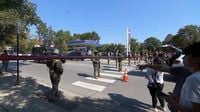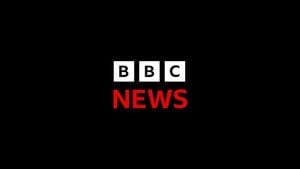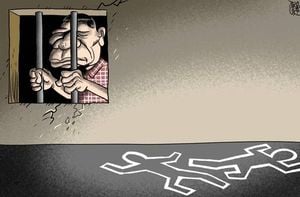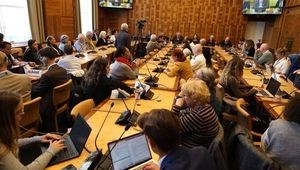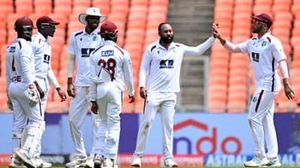On a tense Saturday afternoon in Chicago, a confrontation between federal agents and protesters escalated dramatically, leaving a city already on edge grappling with fresh questions about law enforcement, immigration, and political power. The incident, which took place on October 4, 2025, in the Brighton Park neighborhood near West 39th Street and South Kedzie Avenue, quickly drew national attention and triggered a cascade of political and legal responses.
According to multiple sources, including TNND, Fox News, and NBC Chicago, federal agents—specifically from U.S. Customs and Border Protection—were conducting a routine patrol when their vehicle was rammed and boxed in by as many as ten cars. Among those involved were Marimar Martinez and Anthony Ian Santos Ruiz, who now face federal charges of assaulting, impeding, and interfering with law enforcement. Prosecutors detailed how Martinez, allegedly armed with a semi-automatic weapon, struck the government vehicle and, along with Ruiz, trapped the agents, rendering them immobile.
Assistant Secretary of the Department of Homeland Security (DHS), Tricia McLaughlin, described the harrowing scene in a post on X, stating, "Our brave law enforcement officers were rammed by vehicles and boxed in by 10 cars." She added, "One of the drivers who allegedly rammed into the law enforcement vehicle was armed with a semi-automatic weapon. Officers, unable to move, were forced to deploy their weapons and fire defensive shots at an armed U.S. citizen." According to McLaughlin, the armed woman—later identified as Martinez—had been named in a Customs and Border Protection intelligence bulletin the previous week for doxxing agents and posting online, "Hey to all my gang, let’s f those motherf*** up, don’t let them take anyone."
Martinez was injured by gunfire during the incident but managed to drive herself to a local hospital for treatment after fleeing the scene. Ruiz also attempted to escape but was apprehended at a nearby gas station. No law enforcement officers were seriously injured in the melee.
As the situation unfolded, protesters quickly gathered at the scene, leading to further confrontations with federal agents. The growing crowd prompted the deployment of special operations personnel, a move announced by DHS Secretary Kristi Noem. In a statement posted to social media, Noem declared, "Today in Chicago, members of our brave law enforcement were attacked—rammed and boxed in by ten vehicles, including an attacker with a semi-automatic weapon. I am deploying more special operations to control the scene. Reinforcements are on their way. If you see a law enforcement officer today, thank them."
The incident also exposed tensions between federal and local authorities. According to McLaughlin, the Chicago Police Department "refused to assist" federal agents in securing the area following the attack. She wrote, "Pritzker’s Chicago Police Department is leaving the shooting scene and refuses to assist us in securing the area. There is a growing crowd and we are deploying special operations to control the scene." The Chicago Police Department, for its part, stated that it had responded to maintain safety and traffic control but was not participating in the investigation of the shooting itself. The FBI has since confirmed its involvement in investigating the incident, as noted by Dan Bongino, deputy director of the agency.
The legal response was swift. Andrew Boutros, United States Attorney for the Northern District of Illinois, confirmed that more than a dozen people had been charged in connection with the events, with additional cases under review. The Chicago U.S. Attorney's Office emphasized the seriousness of the incident, posting on social media, "This Department of Justice does not tolerate assaults and obstruction of our brave men and women in federal law enforcement. We will investigate and prosecute all those who assault or obstruct federal law enforcement, including public officials, and we will hold them accountable to the full extent of the law."
Political leaders wasted no time weighing in. Illinois Governor JB Pritzker issued a strongly worded statement criticizing what he described as "unprecedented escalations of aggression against Illinois citizens and residents" by the Trump administration and federal law enforcement. Pritzker revealed that the administration had threatened to federalize 300 members of the Illinois National Guard, stating, "This morning, the Trump Administration’s Department of War gave me an ultimatum: call up your troops, or we will. It is absolutely outrageous and un-American to demand a Governor send military troops within our own borders and against our will."
Meanwhile, Secretary Noem and her team encountered their own obstacles. On the day before the shooting, Noem reported being blocked from accessing the Village of Broadview Municipal Building while attempting to stop for a bathroom break, an incident she later referenced in a video posted online with the caption, "Chicago, we're here for you."
The backdrop to these events is a broader federal crackdown on immigration enforcement in Illinois. Earlier in October, U.S. Immigration and Customs Enforcement (ICE) launched "Operation Midway Blitz," described by agency officials as an initiative targeting "criminal illegal aliens who flocked to Chicago and Illinois because they knew Governor Pritzker and his sanctuary policies would protect them and allow them to roam free on American streets." The ICE processing center in Broadview, just 15 miles from the site of Saturday’s confrontation, has been the focal point for days of protests, with recent reports of demonstrators being arrested in the streets near the facility.
The situation remains fluid, with federal and local authorities at odds over both the handling of the incident and the broader question of immigration enforcement in Chicago. As the FBI continues its investigation and the Department of Justice pursues charges, the city finds itself at the intersection of national debates over law enforcement, civil protest, and the limits of federal power.
For now, the aftermath of the Brighton Park confrontation serves as a stark reminder of the combustible mix of politics, protest, and policing in America’s cities—one where the lines between federal and local authority, between public safety and civil rights, are being tested in real time.
